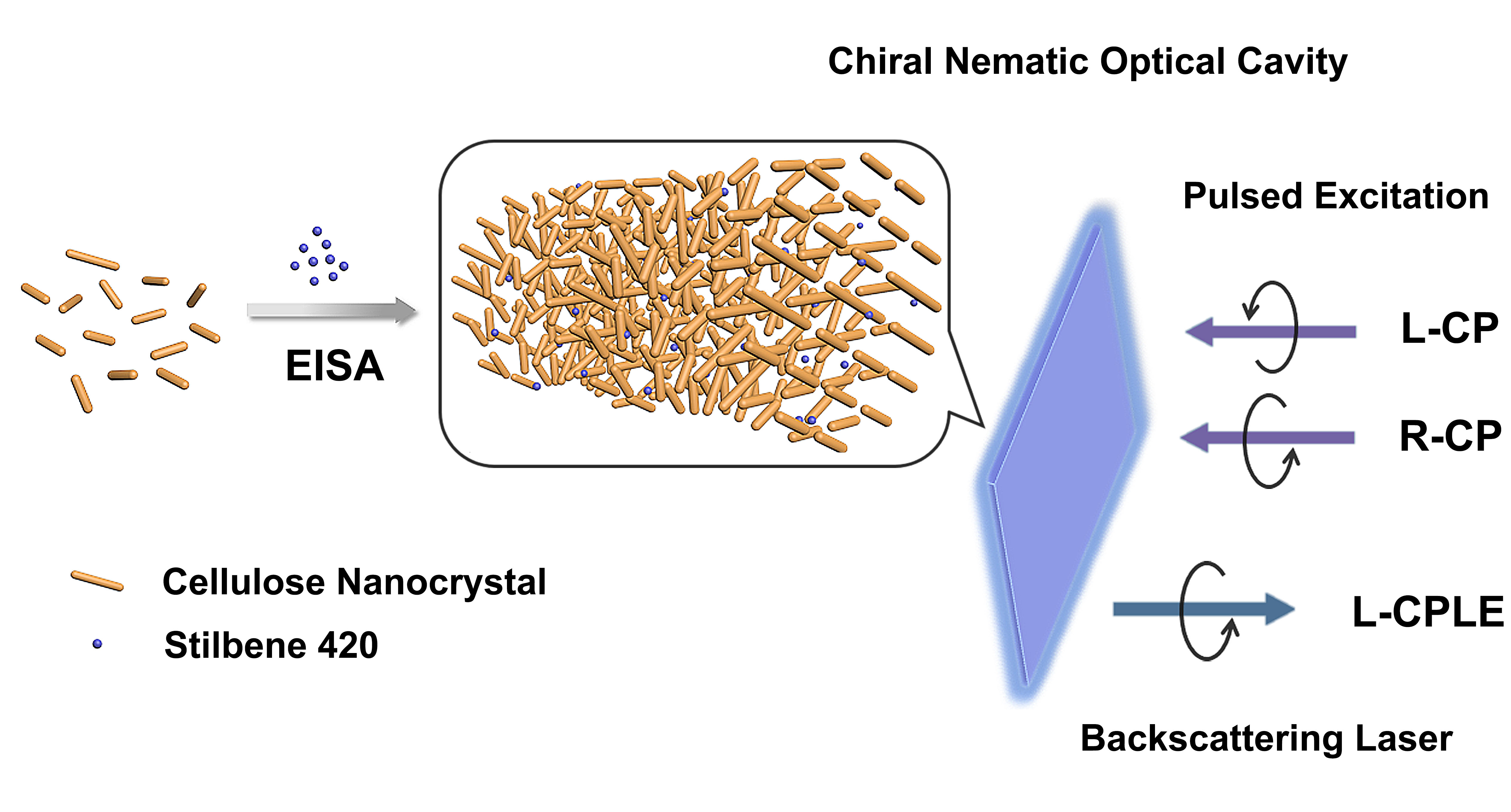CIRCULARLY POLARIZED LASER WITH CHIRAL NEMATIC CELLULOSE NANOCRYSTAL CAVITY
ID:42
Submission ID:60 View Protection:PRIVATE
Updated Time:2021-10-31 16:52:46
Hits:1016
Oral Presentation
Abstract
Circularly polarized lasers featuring significant prospects in advanced spectroscopic technologies are a burgeoning area in the field of photonics and material research. Moreover, the circularly polarized laser is a powerful tool to investigate and understand the chirality-dependent light-matter interactions. The two basic requirements for the circularly polarized laser are a laser gain medium and a chiral environment. A critical aspect in the design of circularly polarized laser, from an environmental and energy perspective, is selecting an eco-friendly, cheap, and well-conceived chiral optical cavity. Cellulose nanocrystals (CNCs), derived from renewable sources, demonstrating the capability to spontaneously self-assemble into a left-handed chiral nematic phase which can be regarded as a one-dimensional photonic structure, is a promising candidate. Here, we present a facile and effective approach to fabricate circularly polarized lasers by the evaporation-induced assembly of CNCs which acts as a chiral optical cavity and a laser dye, stilbene 420. Three lasers with fixed stilbene 420 concentrations and different CNC pitches are examined. Tuning the helix pitch leads to manipulating the chiral photonic bandgap, which couples with the dye optical gain band, thus allowing different laser emission behaviors to be demonstrated. When resonating well the chiral photonic bandgap with the stilbene 420 emission, the CNC-based laser displays a multimode lasing with a threshold of 13 mJ cm-1. Given the chiral nematic structure, the chirality-dependent laser emission is also collected. The composite film presents a left-handed circularly polarized laser emission when detected in a backscattering configuration, which is consistent with the handedness of the chiral optical cavity. Due to the left-handed chiral nematic structure of the composite film, the left-handed circularly polarized laser emission is reflected in the reflection band, while the right-handed circularly polarized laser emission is barely affected and mainly transmitted through the CNC photonic structure, leading to a positive dissymmetry factor, g. The composite film shows strong left-handed circularly polarized laser emission quantified by a g of 0.35 when overlapping the photonic bandgap of the CNC structure sufficiently with stilbene 420 emission and enhancing coupling effects. When manipulating the photonic bandgap further away from the stilbene 420 emission, the composite film exhibits a weaker circularly polarized laser emission and a g of 0.13, which is in line with the less efficient coupling between the chiral photonic structure and the stilbene 420 emission. Our assembled chiral photonic CNC system offers an opportunity for the design and scalable preparation of tailored circularly polarized laser architectures from renewable and low-cost sources without the need for expensive and tedious synthesis.
Keywords
cellulose nanocrystal, chiral nematic structure, light-matter interaction, chiral optical cavity, circularly polarized laser
Submission Author
Dan Qu
Technion-Israel Institute of Technology
Matteo Archimi
Università di Pisa
Andrea Camposeo
Istituto Nanoscienze-CNR
Dario Pisignano
Università di Pisa
Eyal Zussman
Technion Israel Institute of Technology


Comment submit